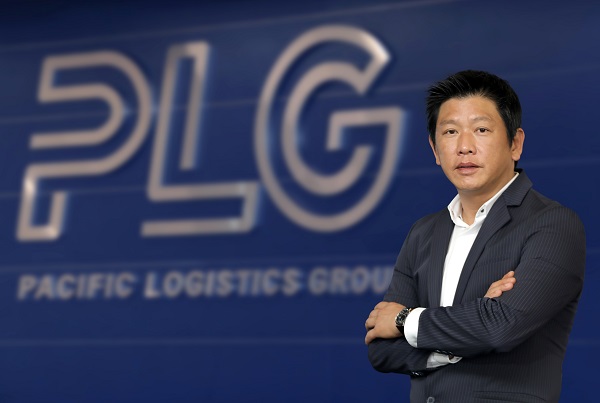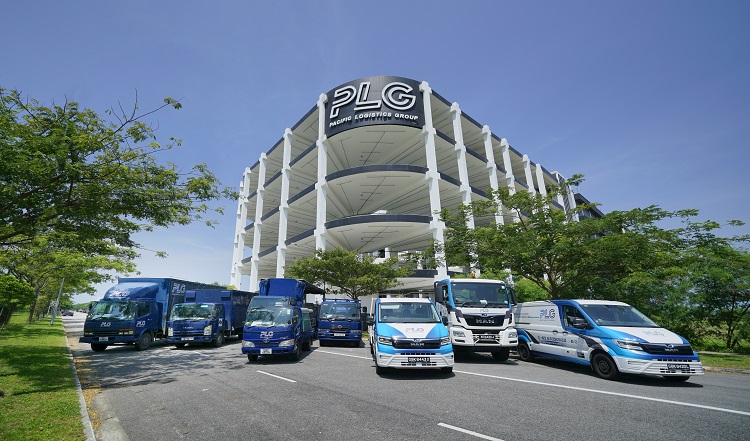The covid-19 pandemic era brought the world to a standstill in 2020. With all the lockdowns, gridlocks and movement restrictions, one industry that had to stretch beyond its limit was supply chain and logistics. Then came an equally turbulent 2021, that saw a never-seen-before congestion on the sea due the Suez Canal blockage and other reasons, causing shipment delays that are expected to normalise only by the end of 2022.
While the industry weathered many storms, Singapore based Pacific Logistics Group (PLG) made the best of the situation, achieving several milestones in the wake. They expanded their capabilities to include end-to-end food logistics services and implemented computerised tracking and temperature monitoring systems. Their teams are also continuously working towards expanding their Zero-GST warehousing solutions and working with global brands to make Singapore a chosen logistics destination.
Congestion Continues
Currently, the biggest challenge is the continual port congestion, with containers that were cleared in two days in the pre-pandemic times taking seven days to clear up. “This is due to a combination of factors – erratic surges in cargo demand, shortage of containers in circulation, congestion from both upstream and downstream global supply chains and irregular shipping schedules,” informs Kelvin Lim, Founder and Group MD of PLG.

Travel restrictions have made recruitment of necessary manpower to aid in faster port clearance, which has further exacerbated the issue, he added. With Singapore being a transshipment hub, the impact is undeniably amplified here. However, hopes have soared since the government expressed the wish to position Singapore as a “catch-up” port.
All of these factors have led to a spike in freight rates and container prices. “In view of these challenges, we continue tapping on our well-established network of partners to secure shipment slots and competitive rates. With our computerised tracking system, we are also able to monitor shipments closely to provide frequent updates to our clients and resolve any issues quickly, should they arise,” said Lim.
Global Expansion
Another big concern for the industry is the power crisis in China which is causing delays in production with factories being unable to meet the global demand. Areas facing the power crunch are also home to some of China’s busiest ports – Ningbo, Guangzhou, Nansha, Yantian and Shekou. PLG set up a dedicated task force in early 2020 to monitor the volatile situation and offer timely on-the-ground support.
In the two decades of its existence, the company has expanded into various geographies. “With Asia – especially Southeast Asia – varying so widely in terms of culture and economic status, there is a need to adapt our operations to cater to the needs of each market. The biggest challenge on this end is talent; to be able to recruit an individual with a global mindset to scale the business but who also has a deep understanding of the local landscape and culture nuances,” explains Lim.
With each country having its unique set of consumer behaviour, market trends, challenges, rules and regulations and the linguistic differences, identifying and working with the right local partners is also extremely critical, he feels. Their operations in Laos, in fact, have become a key focus of the business in recent years. PLG wished to continue contributing to the nation’s growth as it develops into a regional hub that connects China to the rest of Southeast Asia, including playing a key role in supporting the China-Laos railway development, as well as the Belt and Road Initiative. In the years to come, they have set sights on being the preferred logistics partner for shipment between the European and ASEAN markets.
Lessons from China
Talking about China, he mentions how the local task force there is trying to identify any unforeseen situations to plan ahead. “They are constantly on the ground and keeping abreast of the evolving developments to advise the best solutions for our customers. While the team is now depending on electricity generators, we are also looking into bringing in alternative and self-sustaining energy in case of emergencies as per electricity regulations in China,” said Lim.
With the fluidity of the current situation, PLG’s longstanding network of partners have come to fore for their operations in both China and Singapore. These close relationships have enabled them to expedite shipping processes while also getting valuable insights which have allowed the team to pre-empt any potential bottlenecks and delays.
It also allowed them to provide customers information to streamline their planning and production schedules, which has helped their service stand out in a year full of unpredictability. In fact, anticipating potential unforeseen circumstances, they have also put in place contingency plans should the situation take a turn for the worse due to external factors.
Remembering 2020
Mention of contingency plans take Lim back to early 2020 when the slowdown in trade was immediately felt due to the halting of services on certain routes, cancellation of port calls, and reduction of flights and vessels scheduled frequencies. “This resulted in the overall drop in our shipment volume and in turn, a spike in demand for our warehousing solutions as customers sought to store more inventory to manage the reduced and irregular shipping schedules,” he recalls.
In order to meet the evolving needs of the market, the company doubled up its warehousing efforts. This was also done in anticipation of the continual disruptions the logistics sector would face as the pandemic stretches on. Similar thought process was used to include end-to-end food logistics, shifting focus to localised distribution services. This was done by tapping on their existing temperature-controlled transport and storage solutions that are well-equipped to handle perishables such as dairy, meat and wine and spirits. They also offered milk runs.
The fact that the group utilises a mix of sea, air and rail has minimised hiccups due to their ability to offer alternative routes with our well-established network. During the initial phases of the pandemic when flight and vessel schedules were disrupted, they tapped into their joint venture with YUXINOU, a Chongqing train operator, to provide rail freight services at competitive rates.
Location, Location, Location
One big advantage for PLG is its headquarters being close to the Tuas Mega Port. When it becomes fully operational in the next few years, the company anticipates a boost in warehouse storage demand. Lim’s plans for the foreseeable future include:
- Expansion of Zero-GST warehousing storage solutions
- Scaling up value-added warehouse services such as customised wood packing, heat shrink wrap
- Ability to handle higher volume of cargo and facilitate faster turnarounds
- Establish a 24/7 semi-automated warehouse
- Positioning Zero-GST warehousing spaces as a favourable regional distribution hub to the rest of ASEAN
In the same vein, it is its location that is largely responsible for Singapore becoming a global transshipment hub. “Global trade has long formed the backbone of our economy. The latest highly anticipated development would undeniably be Tuas Mega Port, which would cement Singapore’s position as a global hub,” he says. The port will be equipped with a myriad of smart technologies including the use of autonomous vehicles and data analytics to optimise operational efficiency and improve turnaround time of ships, he adds.
Innovations like these, together with the Singapore government’s continual support for the development of maritime technology, will serve as a catalyst for local trade by enhancing Singapore’s competitive edge, he believes. This also positions the country favourably against its competitors, he says, enticing more local and international companies to set up shop here.
Problems and Solutions
The continual disruptions this year have exposed the vulnerabilities of global supply chains. As the Covid-19 pandemic is not over yet, more disruptions in the supply chain are expected. Lim believes that businesses need to anticipate these and come up with relevant solutions.
According to him, there are four key elements that are feel are critical in creating a resilient and robust supply chain:
1. Visibility: Given the volatile climate, businesses need to have full visibility of their entire supply chain to be able to anticipate and manage any potential bottlenecks. This will allow them to interact with their stakeholders quickly and exchange real-time information to minimise delays.
2. Flexibility: The uncertain landscape would mean that historical data will no longer suffice and instead, adaptability and flexibility will be key moving forward. Future decisions will be data-driven, particularly when it comes down to managing risk and inventory to strengthen the business’ flexibility and agility.
3. Collaboration: Building close working relationships with supply chain partners will enable businesses to build multi-tier supply chains, which is a favourable model to cushion against any disruptions.
4. Control: Lastly, maintaining control is important with the ever-growing complexity of supply chains.
Going forward, the industry must focus on providing value-added services to offer customers a fully integrated supply chain solution, Lim feels. The digitalisation and automation necessitated by the pandemic would lead to technology playing a bigger role in the years to come, he says. This can help improve on many counts, he adds, like improving efficiencies in manpower, forecasting trends and potential supply chain disruptions, and providing real time end-to-end visibility in supply chains.
Additionally, as both the public and private sector push for greener initiatives within the sector, sustainable business practices should be at the core of any future-ready business , he thinks. “Technology will also play a critical role in the industry’s transition towards a zero-emissions future. With these investments on both the technological and sustainability fronts, it will necessitate logistics companies to shift towards handling higher-value goods such as automobiles, renewable energy, pharmaceuticals and dangerous goods for their business operations to remain sustainable,” Lim shares.


